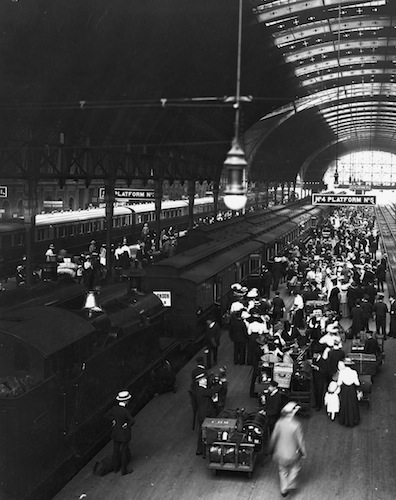In case you missed it see what’s in this section
We recommend

However, the achievement of its champions, Brunel and Gooch was no mean feat. With plans being derailed by both Lords and Marquesses who all objected to the railway in the proximity of or cutting through their land.
In 1835 Isambard Kingdom Brunel was appointed as Chief Engineer for the construction of a railway between London and Bristol. A man of vision and high standards, Brunel became somewhat discouraged by the varying standards of locomotives delivered for his new railway.
It was clear that he needed help. With Brunel recruiting Daniel Gooch in 1837 to assist him with the problem. Gooch swiftly grasped an understanding of the issue and proposed a central repair depot.
It has been suggested that the Great Western Railway was initially planned to run through Savernake Forest. However, the owner of the land, the Marquess of Ailesbury objected. His rejection of the railway followed that of his disagreement to run the Kennet and Avon Canal through his property. These decisions have not only proven to be fortunate for the town but, Savernake Forest that remains popular today with visitors choosing to explore its vast woodland.
Even with the presence of the line in 1840, the location of the Locomotive works was still yet to be decided. Tracks had been laid at Didcot in 1839, as an alternative to Abingdon following on from Lord Wantage’s objections to the railway passing close to his estate. Identifying Didcot as a potential location for the works.
However, Gooch identified “Swindon” as a suitable site because of its junction on the Cheltenham line, and location a "convenient division of the Great Western line for engine working". It was also established that a canal was necessary to transport the coal for the trains cheaply. Therefore, Swindon was the logical option.
With Brunel’s support, Gooch presented his proposal to GWR directors. The establishment of works at Swindon were authorised on 25 February 1841 with construction beginning immediately. The site became operational on 2nd January 1843.
Gooch recorded at the time - "I was called to report upon the best situation to build these works and, on full consideration, I reported in favour of Swindon, it being the junction with the Cheltenham branch and also a convenient division of the Great Western Line for the engine working. Mr Brunel and I went to look at the ground, then only green fields, and he agreed with me as to its being the best place."
With the agreement in place for the railway to come to Swindon, plans were made for it to be brought close along the foot of the hill. Carrying the railway near the town without the necessity of excessive engineering works being built on Swindon Hill.
However, the Goddard family (Lords of the Manor of Swindon), followed in the footsteps of the Marquess of Ailesbury, Lord Wantage and other landowners of the day, by objecting to the railway being run near their property. A likely, unsurprising decision which did not deter operation but resulted in the railway being laid a couple of miles further north.
The whole works closed in1986, with the one building that remains serving as a museum dedicated to the Great Western Railway. The STEAM Museum is popular with locals and visitors alike and provides somewhat of an insight into the work of both Brunel, Gooch and the 14,000 plus workers that were employed by the railway works at his height.
With the engineers' office now, the headquarters of English Heritage. Purpose-built storage there now houses the archive of the National Monuments Record.
As we look to Swindon as a rapidly growing town, it is difficult to appreciate the scale and impact that the railway works had on its arrival. However, we can all agree it was central to its development. Although now closed, the railway works continue to influence business within Swindon, and its infrastructure as former buildings take on different forms.
The Outlet village, Carriage Works and STEAM Museum are just a few examples. And evidence that Gooch’s decision to build a railway works in Swindon did not only influence the residents of the time but, those of the future.
If you enjoyed Emma's article, you can read more on her blog here!
In case you missed it see what’s in this section
Listings